|
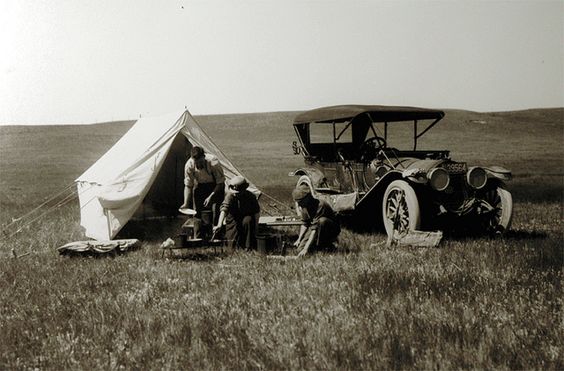
Camping along the Lincoln Highway, near Cheyenne, approx. 1914.
The Lincoln Highway Association Complete Guide recommended a few items of extra car equipment recommended. Among them were
tire chains, cross chains, chain tightener springs, 2 extra tire casings, 4 extra inner tubes, 3 spark plugs,
8 feet of high tensions cables, an extra valve and spring, 3 gallons of oil, 1 axe, a shovel, and upper and lower radiator connections. West of Cheyenne a five gallon milk can with stay straps for water was recommended.
Optional camp equipment was also recommended. There was good reason for the recommendation. Between
Omaha and Cheyenne there were few if any comfortable hotels. Camping was a necessity.
Cheyenne, being a major stop for passenger trains, had nine hotels. Those included the Inter-Ocean, the Plains, the Wyoming,
the Metropolitan, the Normandie, the Albany, and the Becker. Nevertheless, the Lincoln
Highway was not really a ready means of long-distance travel until the mid-1920's and the hotels of Cheyenne were not really intended for
transient travelers but those whose destination was Cheyenne. To solve the problem many cities, including Cheyenne, established
campings grounds to the traveler who was but passing though.
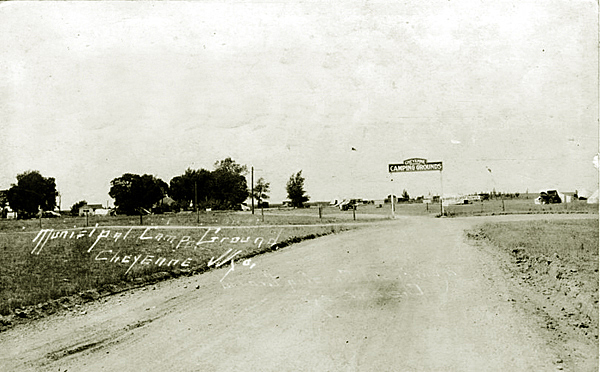
Municipal Campgrounds,
Cheyenne.
On the north end of town, with the coming of motor car travel, the City operated campgrounds at Sloan's Lake for the traveler and visitors to Frontier Days. At first, principal
motor traffic was northward on the Yellowstone Highway to Casper, Sheridan, and Yellowstone National Park.
According to Mae Urbanek, "Wyoming Place Names", Moutain Press Publishing Company, Missoula, 1988, the Lake was named for Mathias
Sloan who had a dairy ranch near the lake. The Lake had earlier been used for ice. The ice house burned in 1903.
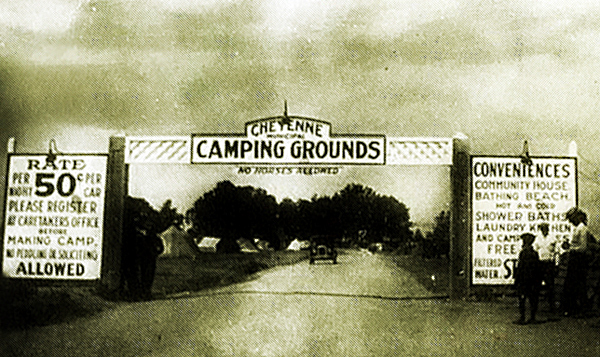
Municipal Campgrounds,
Cheyenne.
Note the amenities offered at the campgrounds. Amenities included a bathing beach, hot and cold showers, laundry, and a
community building. Newspaper accounts in 1920 and 21 indicated that debate ensued about the amenties to be offered in hopes that
tourists would lengthen their stay in Cheyenne.

Bathing Beach at Sloan's Lake, 1920's.
Cheyenne.
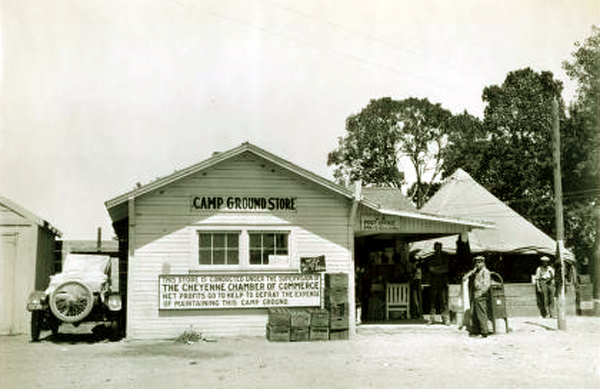
Municipal Campgrounds Store,
Cheyenne.
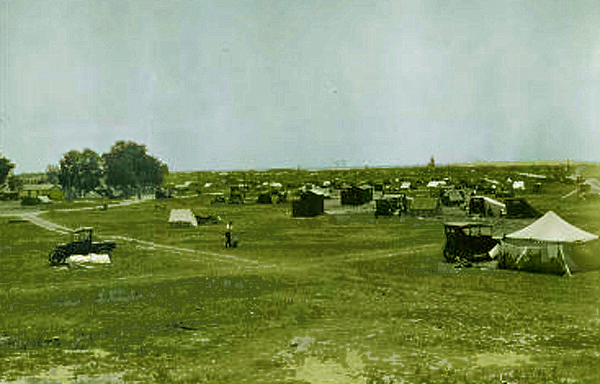
Municipal Campgrounds,
Cheyenne, approx. 1921.
Compare the above scene with that from approximately twenty years before.
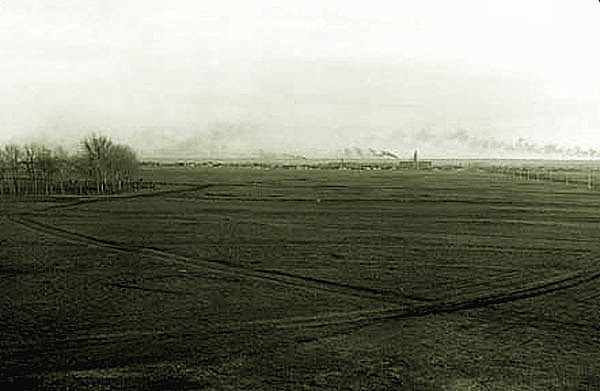
Municipal Campgrounds,
Early view of area near Sloan's Lake.
With improvement to the Lincoln Highway, during the period 1924 increased traffic resulted in the construction
of various accommodations for the motorist. Across Nebraska and eastern Wyoming they remained scant and thus Cheyenne
became a popular stop off. As discussed on the next page, in Cheyenne along the Lincoln Highway, "Lincolnway" and later designated as
"U.S. 30" "cabin courts," auto courts and motel began to appear and then with the advent of chains began to decline.
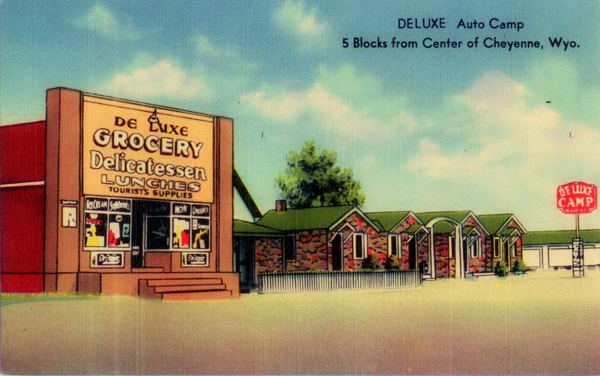
The DeLuxe Auto Court and Grocery.
DeLuxe Auto Court, Cheyenne.
By 1947, the Deluxe received $8.00 for a "double." See Time Magazine September 1, 1947, report on John L. Lewis staying at the
Auto Court.
Next page, Lincoln Highway in Cheyenne Continued, the rise and fall of the Hitching Post.
|